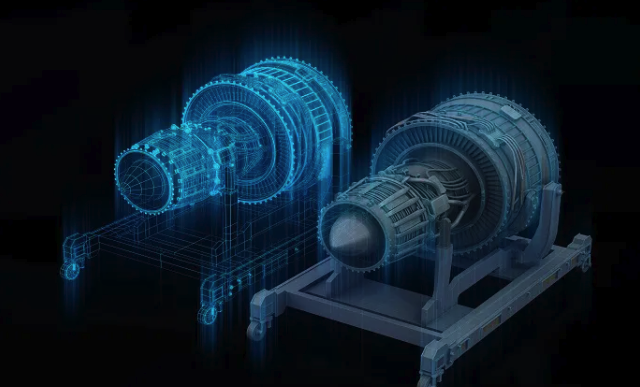Keeping the Focus on the Customer in the Midst of Digital Transformation
A Q&A with SAP Chief Operating Officer Christian Klein
Published: 13/August/2018
Reading time: 7 mins
For nearly 20 years Christian Klein has risen through the ranks at SAP to become Chief Operating Officer (COO) and member of the Executive Board. In a recent interview with SAPinsider, Klein discussed how his background and training have enabled him to keep a focus on the customer while helping to implement technology and innovate at SAP.
Q: Tell us a little bit about your background. How did you end up with SAP?
A: I started with SAP in 1999 as a student at the University of Corporate Education, Mannheim. After my studies I started my career working with Gerhard Oswald (former Member of the Executive Board). He taught me to always put the customer in the middle of my activities and to have a very strong customer focus. I also had various positions in service and support, in development, and in controlling. That core experience learning the end-to-end business of SAP helps me today because I really came to understand early in my career how SAP runs across various functions.
In 2011, I became the Chief Financial Officer (CFO) of SuccessFactors, which at the time was our first major cloud acquisition. Spending two years in the U.S. really helped me understand how our cloud systems work end-to-end, and appreciate from a customer perspective how different a cloud system is from a traditional on-premise business.
I then came back to Germany, and SAP CFO Luka Mucic gave me the responsibility for controlling processes across SAP such as financial planning and analysis and performance management. In 2016, I became the COO and as of this year I’m part of
the Executive Board. That is my career in a nutshell.
Q: SAP has a history of grooming executives for larger roles and more responsibility. How does this approach benefit SAP as a company?
A: My role is a perfect example; as COO, I have to transform the company process- and system- wise. Having the core background I described provided me with a keen understanding of SAP’s business processes, from both a go-to-market perspective and a back-end perspective. That experience proves helpful every day in my current role; my organization is charged with not only changing processes and systems, but in ensuring processes work seamlessly across all lines of business.
Q: SAP takes pride in using its own technology to spark business innovation. How do you — as COO and an SAP customer — use SAP technology to improve your business and make your job easier?
A: One of my responsibilities is to share my experiences with our solutions as SAP’s first customer. Many of the challenges and opportunities SAP faces are related to a successful digital transformation, and the same is true for our customers.
“SAP runs SAP” starts with harmonizing our own business processes. Next is using our own technology to reflect our business processes; we are talking, of course, about integration because processes run end-to-end, but also about innovation. Take marketing as an example; we have a lot of leads that we generate from various marketing channels. We do marketing conveyance via agencies, and we do social marketing. We have great solutions to do that. When the leads come in they need
to be qualified and scored, and in the past this was all manual work. Human beings tried to qualify a lead as hot or cold. Now we have machine learning to take millions of data points to read leads and score them in the best possible way so that when the leads go over to sales, sales representatives can be sure that the leads are highly qualified. This process dramatically increases the volume of our sales pipeline.
In addition to an increase in the volume of leads, the quality of the leads also improves. The salespeople don’t need as many leads to close a deal. This is possible when we use machine learning to automate the scoring, nurturing, and qualifying of the leads. With smart algorithms we use previous transactions and millions of data points from the past.
In sales, for example, we use algorithms to find the best price. We analyze millions of past deals and say, “OK, in the past the best price point we secured for such a deal was $50 per user, and what was the value proposition for the customer?” Before you give any further discount, this solution tells you this could be a price point that we achieved because we showed the customer this kind of business value. These are the smart machine learning scenarios built into the product to get a better business outcome — and that in the end is what matters.
Q: What are some of the important lessons you’ve learned over the past few years in using SAP technology that you think could benefit customers?
A: In the past year we changed how we transfer information and processes. In the past it was always very much technology driven, but now we first look at the needs of the end users and the business processes. You have to understand what kind of value you want to get out of the new software. You align the business value with the end users’ requirements, and then you start looking at how to take the solution and accommodate the system in a way that gains business benefits at the end of the project. With this approach, IT and the business now work end-to-end together. In every project I oversee, someone from the business and someone from IT share the lead. I don’t want to have a project where only IT is in the lead because I want to make sure that what we do with our SAP S/4HANA implementations and our hybrid marketing cloud really fit to the needs of the business.
In our organization there is a small team of project managers who orchestrate this innovation between the business, the lines of business, IT, the master data team, and the analytics team. Last but not least, we always have a data workstream because data is the new oil. When you have a mess in your data architecture, no digital boardroom can help you. In my projects I often make sure that the first workstream is always the data because the data architecture must fit. When you do a migration to SAP S/4HANA, think twice about how you want to store and maintain your data because this is the basis and the foundation for getting great analytics and insights into your business. That’s why we have a huge emphasis on data and there’s always a workstream in my organization.
Then on the business side, there are more than 15,000 people who use CallidusCloud, our latest acquisition. Change management is very important on the business side; project managers need to make sure that the end users are trained. The good thing is that CallidusCloud is so self-intuitive that users don’t need that much training, but you have to do it. Otherwise you may go live and think everything is prepared, but the end users are not trained and are not enabled.
Q: Tell us more about the move to the cloud. What are some of the impacts you’re seeing in your role as SAP moves to the cloud? What changes have you had to make and what approaches are different?
A: When you look at SAP’s move to the cloud, there have been a lot of great acquisitions; SAP SuccessFactors, Concur, and SAP Ariba are all best-of-breed solutions in their respective categories. Now we saw over time that they have to run on different processes that go across lines of business. That’s why we announced the Intelligent Enterprise at SAPPHIRE NOW 2018. Everything is built on one platform, where we bring all our assets together to harmonize the customer experience.
The second approach goes into the responsibilities of my team to improve the customers’ experience after they bought a product from SAP. How can we improve the support experience? How can we improve the onboarding experience to the cloud so that there is consistent product behavior? There is also a customer portal coming where the customer can go and find all the necessary information about his business at SAP across the value chain end-to-end.
Q: One of the themes that SAP is now emphasizing is being a purpose-focused organization. What does that mean to you?
A: Our mission is to make the world run better and improve people’s lives. Of course, we often talk about revenue growth and gaining efficiency with our software, but when I talk with a customer, I also find out what our software can do in the area of research and in the area of healthcare (for example, helping researchers find new ways to treat cancer). Software can help create a better world. We should never forget this purpose when we are doing business with our customers.
Q: What are your objectives for the coming year?
A: Customer success is very near to my heart. At the end it’s not only about selling our software, but about making sure that our customers get some business value out of it. It’s the same as what I do inside SAP. My promise to all our customers is to put an even higher focus on providing the greatest end-to-end customer experience. As SAP’s first customer I think that is a very important element because it helps to improve our solutions and our products.
More Resources
-

-

Enhanced Development Tools Delivered with ABAP Platform 1809
Published: 27/February/2019
Reading time: 7 mins
-

- SAP Internet of Things
 Premium
Premium
Digital Twin Enabled Manufacturing Planning
Published: 15/June/2022
Reading time: 3 mins
-



